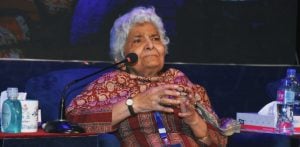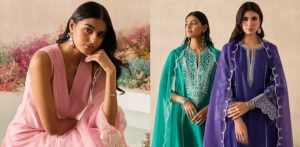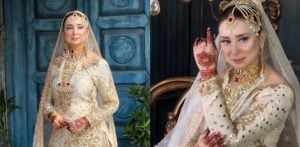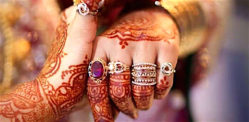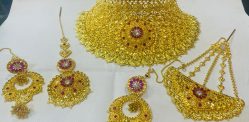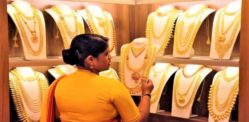"I feel it does not fit my style"
South Asian weddings are known to be lavish affairs – vast amounts of gold jewellery, decadent cuisine, extravagant décor and stunning outfits.
In this instance, the once-popular gold ornaments donned by brides are seeing a decline.
Traditionally, the bride would wear gold jewellery gifted to her from her parents as well as in-laws. It was the only thing a woman rightfully owned.
Gold acted as a source of insurance for a married woman when she entered her husband’s house.
South Asian immigrants carried the tradition of gold with them to the west.
Nilika Mehrotra in ‘Gold and Gender in India: Some observation from South Orissa’ states:
“(The) relationship between gold and women is special as almost every woman desires it and possess some quantity of it, in the form of ornaments.”
There is no doubt the backbone of Asian gold is an upcoming bride. Yet, third-generation South Asians are challenging traditions as they have been seemingly encapsulated by western culture.
As a result of this, the gold industry has been forced to reinvent itself. We explore the reasons for this shift in preference.
No Gold, No Wedding
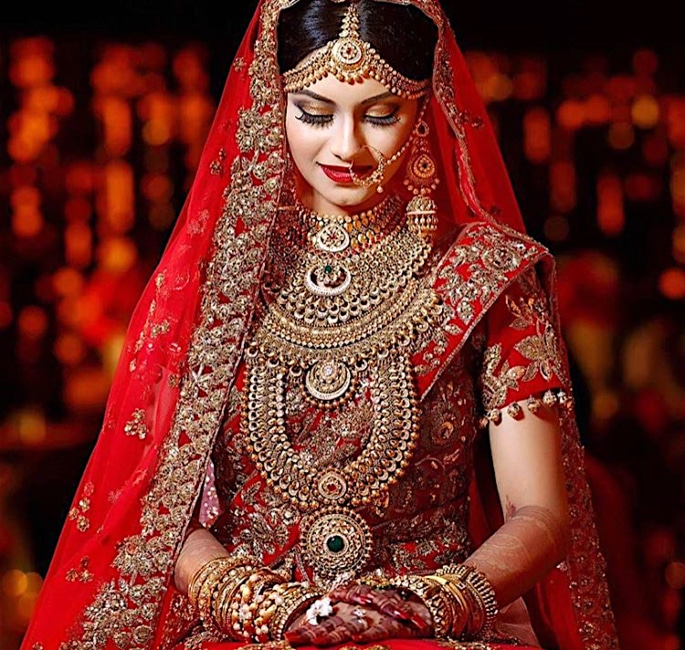
The saying goes – no gold, no wedding. Historically, the importance of gold was paramount.
The amount of gold one gifted their daughter was a sign of wealth and future prosperity.
Typically, parents of the bride started saving up decades before their daughter was due to wed.
This was done so that their daughter had enough gold to wear on her wedding day, to take to her in-law’s house and as means of financial-security.
Vandana Mohan, a wedding planner in New Delhi, explained the importance of gold. She said:
“Historically, the reason why gold became so prominent was because it was a symbol of wealth. It was the most cashable component. If you gave somebody gold you could immediately get actual money in return.”
Vanada continues to say:
“It doesn’t matter how progressive the family, something gold will always be at the wedding, whether that is in presents, jewellery or coins.”
Financial Concerns

Gold, as we know, comes with a hefty price tag. With the strain of the financial economy, luxuries such as gold are difficult to afford.
Yet, the pressure of upholding tradition is a major factor that forces families into a corner. The expectation of a bride being donned in gold is judged by relatives and neighbours.
Somasundaram PR, managing director of the World Gold Council in India says, “you’ll see more gold than their (brides) faces.”
According to India’s Jewellery Export Promotion Council approximately 1000 tonnes of gold, a year is consumed by India. This is about a third of the world’s supply.
It is not only the South Asians in the east that are desperate to uphold traditions, as British Asians do not lag.
The former chairman of the National Association of Jewellers revealed that in the UK, Asians spend over £220 a year on 22-carat gold and diamonds.
In particular, South Asian families spend between “£20,000 and £25,000 on a woman’s wedding jewellery.” Yet, this is being changed by British culture.
The price of gold has increased; therefore, sales have become stagnant.
Jaz, a 40-year-old mother of two, described her wedding day gold and the expense. She said:
“Twenty years ago, when I got married, I was your typical Asian bride decked in gold. From a mala (long necklace), nath (nose ring), tikka (headpiece) to bangles and heavy earrings, I wore it all. This did not come easy.
“The amount my parents spent on my gold jewellery was extortionate. Although it was the tradition to wear such gold pieces, looking back, I have realised that it was not worth the financial strain.”
Jaz carried on providing advice for upcoming brides. She explains:
“If I were to give one piece of advice to young women planning their weddings, it would be to not spend so much on gold jewellery.
“Despite, what our elders say about it being a sense of financial security, having that amount in cash would be a lot more beneficial, as that could help you with a house deposit or be an investment.”
This new way of thinking being adopted by many South Asians will result in the significance of gold jewellery decreasing.
Mr Pattni shed light on why Asians invested in gold. He said:
“First-generation Indians came here (UK) and bought lots and lots of gold and gave it to their children so they wouldn’t need plan B.”
The emphasis on gold as being more than just jewellery is seemingly universal. Mr Soni states:
“When an Indian is buying jewellery, it’s more an investment. But the British-Indian market is different.”
It appears gold does not hold the same value to youngsters as it did to their parents and grandparents.
Custom-made Gold Jewellery

It is important to note that a bride wearing gold does not necessarily have to be the classic bright yellow metal tone.
There are other alternatives and customised gold ornaments are great for a bride who wants to stay in touch with her Desi side.
Anil Pethani, director of Cara’s Jewellers, based in Dubai’s Gold and Diamond Park notes that his jewellery sales increase during Indian wedding season.
He adds that it is customised jewellery that is in demand. He states:
“Fifty per cent of the business is customisation. Many customers come with their ideas and how they want their jewellery made. Within a day, we are able to create the customised design. In other parts of the world, the process takes a long time.”
The idea of designing your gold jewellery is intriguing and should not be limited to celebrities.
According to Vandana brides prefer customised jewellery as it is unique as opposed to traditional gold necklaces, earrings and so on. She mentions:
“It could be pearl and gold, it could have a touch of a diamond, it could be no stone at all or it could be just plain gold and silver. There are many options for youngsters to choose from.”
Anisa, a 27-year-old newlywed wore gold jewellery for her big day. When asked how she decided on her chosen pieces, she explained:
“My wedding jewellery was all custom-made. I wanted to keep in touch with the traditional side as well giving it a more modern twist.
“I kept my pieces quite minimal and delicate, choosing intricate designs that complimented my entire wedding look.
She continued to mention the general misconception surrounding the yellow metal:
“I find that people of my age tend to associate gold jewellery with being bright yellow. However, there are many alternatives once you start browsing.
“For me, it was really important to incorporate that Desi flair within my jewellery.
“I think people should be more open to experimenting with gold, as truly beautiful pieces can be created and your vision can be brought to life.”
In this instance, it is the quality over the quantity.
Parents should be more mindful of what it is their daughter wants as opposed to buying as many pieces of jewellery to flaunt their wealth.
Branded Jewellery vs Gold Jewellery
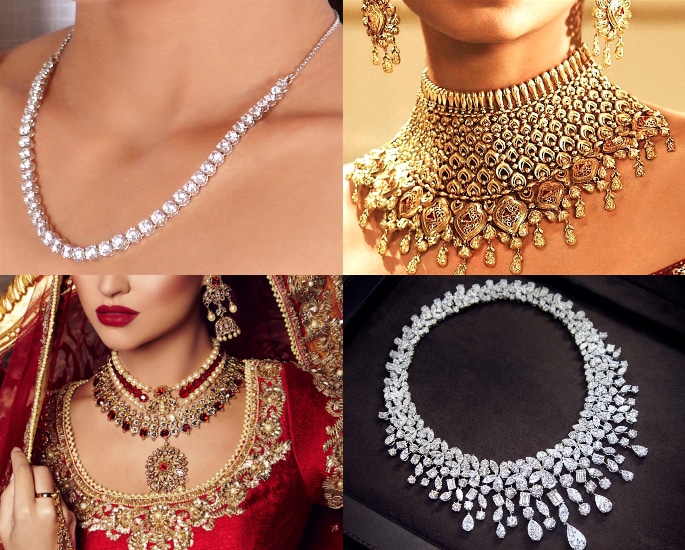
Traditional gold is feeling the pressure of mainstream branded jewellery. Many brides prefer to choose designer accessories such as Pandora, Swarovski and Goldsmith.
Miss B, a 24-year-old teacher admitted that she would not opt for gold accessories for her wedding day. She said:
“As a young, British Asian woman, wearing traditional gold jewellery on my wedding day is not something I am overly keen on. The colour and tone of the majority of the authentic pieces are not very appealing to me.
“I feel it does not fit my style and is not the look I would go for, for my big day.”
She went on to mention that gold jewellery is considered outdated:
“I tend to lean more towards white gold or rose gold pieces and think these look much more elegant, especially for a wedding, where I would be spending a large amount of money on jewellery.”
As well as looking more aesthetically pleasing to some, the more affordable price tag is favourable to most bank accounts.
In this instance, it would be significantly cheaper to buy branded jewellery rather than traditional gold ornaments.
It is important to remember the one wear policy is no longer feasible. The idea of being able to wear your wedding day jewellery again is more favourable.
Thus, branded jewellery would both complement your lehenga and can be easily reworked for an occasion.
There is no denying the beauty and elegance of gold. A bride is instantly overcome with a rush of confidence and power.
Yet, this notion is certainly being contradicted. The rejection of vast amounts of this yellow metal is an act of defiance.
No longer are Asians brides being forced into associating the importance of gold in their future lives. They should be free to decide on their own accord what they wish to adorn.
It is time the gold market reinvents itself to make it more relatable to the younger generations.




